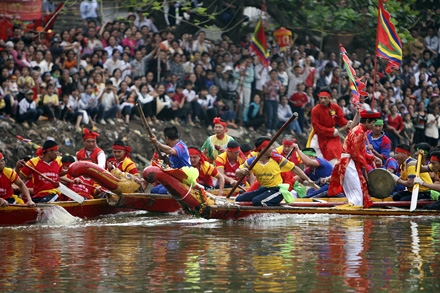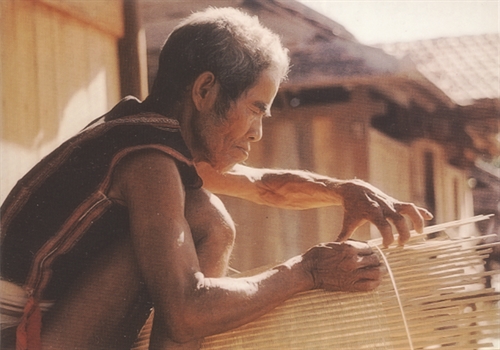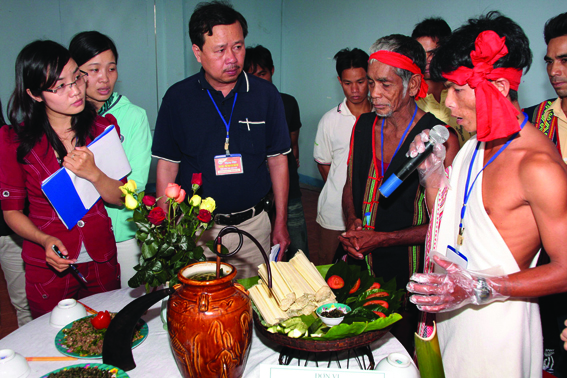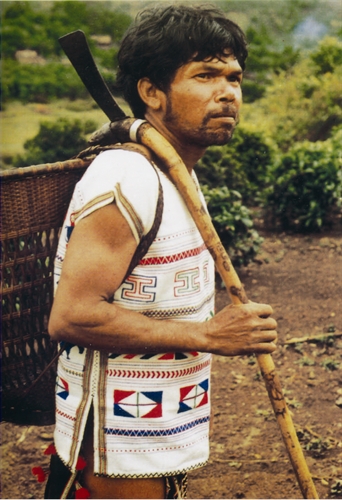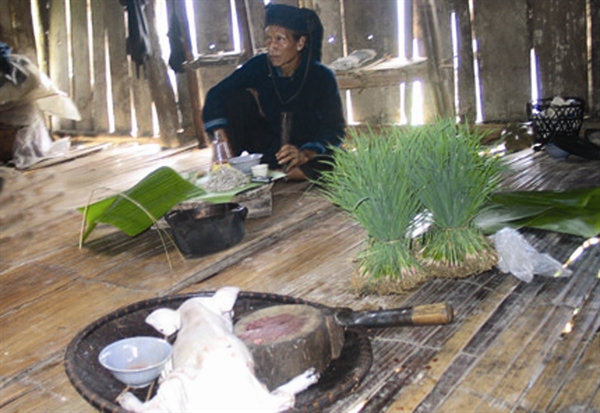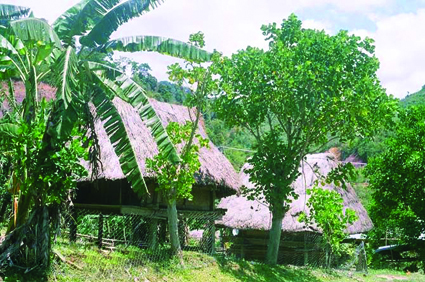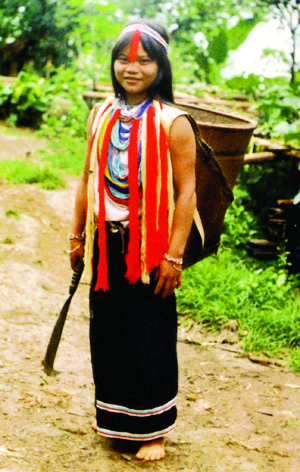>>The Khmer minorities - Their customary laws and practices
>>The Khmer devotion to Buddhism
Ta Thi Tam
Ethnology Institute
The Khmer are Theravada Buddhists, having their own lunisolar calendar called mahasangkran according to which the new year falls on mid April of the calendar year when the rainy season begins.
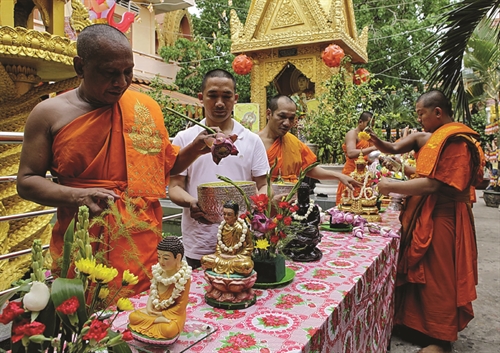 |
| Buddha bathing ceremoney of the Khmer at Chantarangsay pagoda (Ho Chi Minh City)__Photo: The Anh/VNA |
The Khmer new year festival lasts three days, usually on April 14, 15 and 16, to welcome the rainy season with hopes for prosperity and happiness for the rest of the year. It is also a chance for this Buddhist group to pay homage to Buddha and Buddhist monks as well as show their gratitude toward their grandparents and parents, both living and departed.
To prepare for this important event, the Khmer clean and decorate their homes, particularly the ancestor altars, in the belief that it will sweep away all misfortunes of the old year. Women make different kinds of cakes, including banh tet (sticky rice cake with pork and green bean filling), banh it (sticky rice cake with coconut and green bean filling), ginger cake and sponge cake, for offering to Buddha and ancestors. All people are also supposed to finish all incomplete work before a new year comes. Those who have not paid all their debts or have not completed building their homes when a year draws to an end are believed to have bad luck in the coming year.
As devout Buddhists, the Khmer celebrate the new year in the village pagodas which are cleaned and decorated with flowers and colorful lanterns to ring in the new year.
According to the Khmer calendar, the new year’s eve moment is not fixed at midnight but is six hours later than that of the previous year. Therefore, the time of transition from an old to a new year can be anytime during the three days.
At the new year’s eve moment, all family members sit in front of the ancestor altar for a ritual dedicated to Tevada, a god believed to be sent from heaven to protect all creatures on earth. Every new year, a new Tevada will arrive and a ritual is conducted at the time of a year’s transition to see off Tevada of the old year and welcome the new one. In this ritual, the family head lights five incense sticks and puts them on the altar with five branches of flowers, five candles, five young rice seeds and different fruits, praying for Tevada’s protection of the family in the whole year. After that, all family members prostrate themselves three times before the altar.
On the first day of the new year celebration called Chol Sangkraan Thmay, all villagers dress up and bring offerings, including cakes, fruits, rice, candles and incenses, to the village pagodas for the mahasangkran procession ceremony. The ceremony starts with an offering ritual dedicated to Buddha and Thevada to pray for their support for a peaceful and prosperous new year. The offering ceremony is followed by a procession led by Acha, a prestigious man conversant with Khmer customs. The procession joined by monks and villagers goes around the pagoda three times to welcome Tevada of the new year before entering the pagoda via the main eastern entrance. In the evening, villagers gather in the pagoda to hear monks pray for the country’s peace and the people’s prosperity and preach Buddha’s teachings. After that, young people play folk games, sing and dance on the grounds in front of the pagoda.
In the morning of the second day called Wonbot, villagers again visit the pagodas to pay homage and offer foods to the monks. The foods are first placed on the family altar as offerings to Buddha before they are given to the monks. Before having the foods, the monks conduct a ceremony to offer the foods to hungry wandering souls and give blessings to the food givers.
In the afternoon, villagers hold a rite to build a hillock of sand on the ground in front of the pagoda in the belief that it will cultivate virtues and morals for themselves and their children to enjoy a happy new year. The group believes that with every grain of sand put on the hillock, a sin will be cleared and a soul in hell will be released. This custom originates from an age-old Khmer legend about a hunter who killed so many animals in his life. Thanks to giving donations to mendicant monks, he was advised by a monk to cultivate virtues by erecting a sand hillock in a pagoda in his neighborhood. When getting old, this man was seriously sick as he was haunted by the animals he had killed. Remembering the sand hillock, this man asked the animals to count all grains of sand of the hillock before taking revenge on him. The animals agreed but could not finish this hard job and finally gave up. The hunter then recovered and tried his best to do charity until he died and was sent to heaven.
On the last day called long sak, in the morning villagers again offer foods to the monks before attending the Buddha bathing ceremony. This ceremony, conducted in the afternoon, aims to wash out misfortunes of the old year and welcome best luck of the new one. In this ceremony, the monks spray flower-scented water onto Buddha statues and clean worshiping objects. After the bathing ceremony, the monks conduct another offering ceremony to pray for peace and prosperity for the country and good health and bumper crops for villagers in particular. While reciting prayers, the monks spray scented water onto villagers, a symbolic act to spread happiness to Buddhist followers.
When a Khmer dies, he will be incinerated and his ashes are put into a jar. The jar can be placed on the family altar or in a stupa of the clan in the field but is mostly placed in a stupa of the pagoda. That’s why, the Buddha-bathing ceremony is followed by a ritual to bathe the spirits of those whose ashes are placed in the pagoda stupas. In this ritual, a monk prays for peace for the dead and reads their names one by one. When a name is read out, a child of the dead will call out “Parent, I am here to bathe you” while placing incense sticks and flowers and pouring scented water around the foot of the stupa. This ceremony, which is believed to help the dead to go to Nirvana or reincarnate in a better life, gives children a chance to show their gratitude toward their departed parents.
After that, villagers return home for another ritual to bathe the elders. Every family that has parents aged 70 or older prepare flower-scented water to symbolically bathe them to show filial gratefulness to their parents.
During the new year festival, the Khmer has an original ceremony for young men to stay in pagodas as monks for between one and three years, before they get married and lead their own family. This custom aims to help Khmer boys grow up with virtue and talent as they will have a chance to learn not only Buddhist tenets but everyday knowledge to be a virtuous person. The stay is also considered the boy’s repayment to his parents for their raising up as this custom originates from a moving tale about a mother and his son. As the father died early, the mother had to replace him as a hunter to get food for her son. This kind-hearted and dutiful son who found his mother killing animals a sin decided to become a monk, reciting prayers to save her soul. Thanks to her son’s devotion, when the mother died, her soul was not ill-treated by evil spirits.
In the new year days, the Khmer also visit different pagodas to pray for peace and happiness. They also go to meet relatives and villagers to give best wishes for the new year.-
